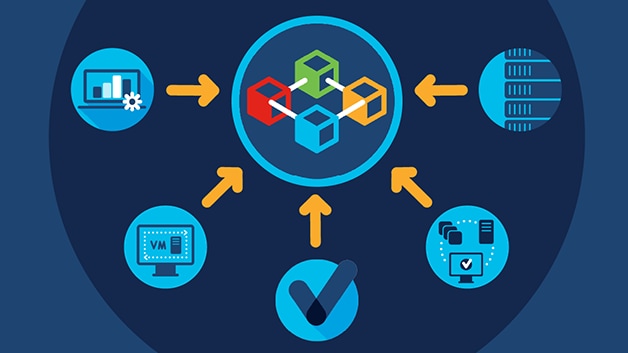Q&A
How does converged infrastructure work?
Converged infrastructure typically includes the following elements:
- Compute
- Storage
- Networking
- Hypervisor
- Management software
- Automation and orchestration capabilities
Converged infrastructure solutions can be designed, tested, and prevalidated for a variety of applications and industry use cases.
Converged infrastructure vendors may deliver equipment tested, preracked, and ready to use. Alternatively, the equipment can be assembled at a customer site, along with a reference architecture document, which is a detailed guide on how to deploy and configure the solution.
What is hyperconverged infrastructure?
While converged infrastructure consists of disparate components that are grouped together, pretested, and prevalidated, hyperconverged infrastructure (HCI) combines compute, virtualization, storage, and networking in a single cluster.
Starting with as few as two nodes, users can easily scale out to match computing and storage resource needs. Hyperconvergence brings cloudlike simplicity on-premises and within a single, easily managed platform.
In addition, in an HCI solution, all of the storage is integrated into the server. Converged infrastructure systems use storage arrays, and the server has no local storage.
